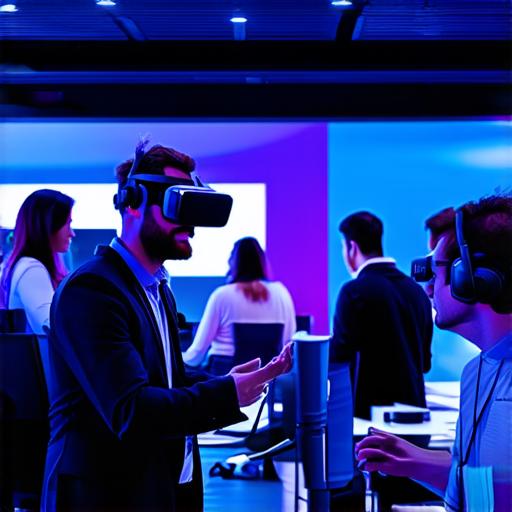
Virtual reality (VR) technology has been around for several decades now, but it is only in recent years that it has gained significant attention and traction as a tool for enhancing workplace experiences. VR is essentially an immersive digital experience that can simulate real-world environments or create entirely new ones, allowing users to interact with them in a way that feels authentic.
Enhancing Communication and Collaboration
One of the key benefits of VR technology is its ability to facilitate communication and collaboration among team members, regardless of their location or physical capabilities. For example, a team working on a project can use VR to simulate an environment where they can all interact with each other as if they were in the same room.
This can help break down barriers that might otherwise prevent team members from working together effectively.
Additionally, VR technology can be used to create virtual meeting spaces that are more accessible and inclusive for individuals with disabilities or mobility limitations. These virtual environments can be designed to accommodate wheelchair users, provide closed captioning and transcripts for those who are deaf or hard of hearing, and allow for other accommodations as needed.
This can help ensure that everyone has an equal opportunity to participate in the meeting and contribute their ideas.
Training and Development
Virtual reality technology is also a powerful tool for training and development. It allows individuals to practice new skills in a safe and controlled environment, without the risk of injury or damage to equipment.
Moreover, VR technology can provide a more immersive and engaging learning experience, which can lead to better retention of information and improved overall performance on the job. By creating realistic simulations of real-world scenarios, VR can help employees develop their problem-solving and decision-making skills in a way that is both fun and challenging.
Creating Diverse Workplaces
Virtual reality technology can also play a role in creating more diverse workplaces by providing opportunities for individuals from different backgrounds to interact with each other and learn about each other’s cultures. For example, VR can be used to create virtual tours of different parts of the world, allowing employees to experience new environments and gain a better understanding of different ways of life.
Additionally, VR technology can be used to simulate diverse workplace scenarios, allowing individuals to practice interacting with colleagues from different backgrounds in a safe and controlled environment. This can help break down stereotypes and promote greater understanding and respect among team members from all walks of life.
Summary
In conclusion, virtual reality technology has the potential to contribute significantly to creating more inclusive work environments by enhancing communication and collaboration, facilitating training and development, and promoting diversity and inclusion. As VR technology continues to evolve and become more accessible, it is likely that we will see even more innovative uses of this powerful tool in the workplace.
